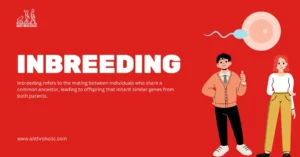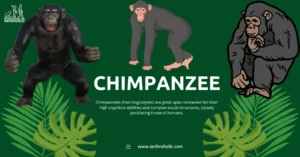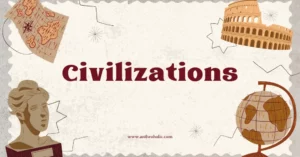AI Answer Evaluation Platform Live Now. Try Free Answer Evaluation Now
Great Chain of Being
The “Great Chain of Being” is the term used in medieval culture to describe the hierarchical order of the natural world. The French anthropologists Émile Durkheim (1858–1917) and Marcel Mauss (1872–1951) observed that people’s conception of the organization of nature, is in some ways a replication of their own social relations, i.e. it is acceptable to imagine the animal kingdom to be similarly structured as a rigid hierarchical society. Thus the Great Chain of Being applied the “rigid linear hierarchy” of medieval Europe- king, princes, nobles, peasants, and slaves, to the animal kingdom [2].

History
Scholars have conceived of the Great Chain of Being in various forms throughout history [2]. Arthur O. Lovejoy (1936) served as a pioneer of the chain of being in 18th-century anthropological thought. He mentioned some major implications that thinkers between the sixteenth and eighteenth centuries also utilized [1].
i) Arthur O. Lovejoy
The historian Arthur O. Lovejoy (1936) recognised three fundamental intellectual elements of the Great Chain of Being, which he named the principles of Plenitude, Continuity, and Gradation [2]. These ideas were inspired by Plato and Aristotle [1].
- The Principle of Plenitude: The principle of plenitude was derived from the works of Plato [1]. It stems from the Christian belief that the ground serves as both a container for and a symbol of God’s bounty. Considering this, God uses the variety of his species to show his wisdom and benevolence. it was believed that God is demonstrating his creative power by creating not only a limited number of species but all conceivable ones. Because of this, it was impossible to distinguish between actual and imaginary animal species; everything from crows and pigs to mermaids and centaurs must exist somewhere [2]. Plenitude played a significant role in the discussions about the plurality of worlds, especially those related to the new cosmology of the 16th and 17th centuries [1].
- The Principle of Continuity: The principle of continuity was derived from the works of Aristotle [1]. According to the principle, there are no divisions between various species of living things. The transcendent line on which distinct species fell was itself unbreakable, and the fact that God made ‘blended species’ was another illustration of the wisdom and power of God. As a result, the apes established a link between monkeys and humans, and the discovery of chimpanzees at the end of the 18th century completed the gap between the “apes” and humans [2].
- The Principle of Gradation: The principle of gradation, which was also derived from Aristotle stated that the natural order is fundamentally a hierarchy that extends from the lowest form of life all the way up to the highest, most complex, and intelligent form of life- humans. In this way, the linear orders reflected the structure of society on earth. According to some interpretations of the Great Chain, humans were not at the top but rather in the center, beneath a “celestial hierarchy” that included angels and archangels and went all the way to God [2].
ii) Monogenists vs Polygenists
Scholars of natural history in the eighteenth century struggled to reconcile their conclusions about a leading social issue of the time; slavery, which was increasingly being justified by an emphasis on the alleged inferiority and lesser humanity of the non-European races. On the one hand, the “abolitionists” and the “monogenists” (those who believe humans have a single origin) cited the Bible to argue for the unity of species as the result of God’s singular act of creation and if Adam and Eve resembled Europeans, then it stands to reason that African facial traits must have developed later, and vice versa [2].
On the other hand, the measurements of the skull and face appeared to connect the other races to apes, at least in the eyes of academics who wanted to dehumanize Africans to support the practice of slavery. The polygenists (those who believe humans have numerous origins) divided the human races to reject Biblical literalism, but in doing so they drew the entire species closer to the apes and, consequently, to the rest of life on Earth in their hierarchical framework [2].
iii) The Principles of Classification and The Problem of Extinction
The interpretations of the Great Chain of Being and its consequences formed the basis of two intense debates in early modern biology. In the middle of the 18th century, it concerned classification, and at the beginning of the 19th century, it concerned extinction [2].
According to Swedish botanist-physician Carl (Carolus) Linnaeus, life was hierarchically arranged into categories of equal rank rather than existing as a single series. His establishment of formal classification principles transformed biology in the 18th century. However, some academics disagreed with it, most notably the French naturalist Count de Buffon. The reasons that led Buffon to oppose the Linnaean system are: i) It was fairly apparent that nature was ordered in upper and lower forms of life, so the linearity of nature could not be overlooked, and ii) common descent could not possibly be true [2].
The issue of extinction was the other significant debate that the Great Chain of Being had to deal with. English naturalist John Ray argued that if any species had gone extinct, his fundamental theory of nature would be challenged. Such a reality would be a disruption in the cosmic “chain” in that it would either reveal a fundamental flaw in the conception of God’s creation or the weakness of God’s creation in the presence of a human will. However, in the late 19th century, Jean-Baptiste Lamarck and Georges Cuvier developed a theory which incorporated the phenomenon of extinction. According to Lamarck’s theory, when an organism faces the danger of extinction, it responds by incorporating enhancements into its organic features. In other words, it moves up the Great Chain of Being to escape extinction. Cuvier, on the other hand, argued that the Great Chain was inaccurate because he observed four types of creatures: vertebrates, molluscs, insects, and radiates, which are not comparable and, therefore, cannot be ranked. He saw extinction as a periodic replacement of existing animals by newer forms of life [2].
The Relevance of The Great Chain of Being in Anthropology
With many of the same goals and objectives with regard to comprehending the variety and constraints on behavioral expressions, social and cultural anthropology has been characterized by a holistic cross-cultural comparative perspective. In essence, anthropologists are interested in the study of primates, because humans are essentially primates. By describing and comprehending the biological and behavioral traits of non-human primates as a whole, anthropologists can better understand how humans differ from other primates and how in some ways we are comparable to them [3].
References
[1] Bynum, William E. “The Great Chain of Being After Forty Years: An Appraisal.” History of Science, vol. 13, no. 1, SAGE Publishing, Mar. 1975, pp. 1–28. https://journals.sagepub.com/doi/10.1177/007327537501300101
[2] Marks, Jonathan. “Great Chain of Being.” ENCYCLOPEDIA OF RACE AND RACISM, pp. 68–73. webpages.charlotte.edu/~jmarks/pubs/Enc%20race%20GCOB.pdf.
[3] McDonaldPavelka, MaryS. “Change versus Improvement over Time and Our Place in Nature.” Current Anthropology, vol. 43, no. S4, 2002, pp. S37–44. JSTOR, https://doi.org/10.1086/339563. Accessed 14 Mar. 2023.




